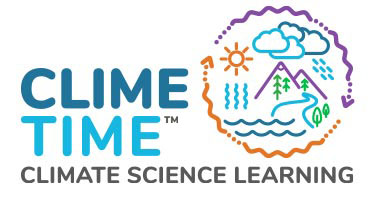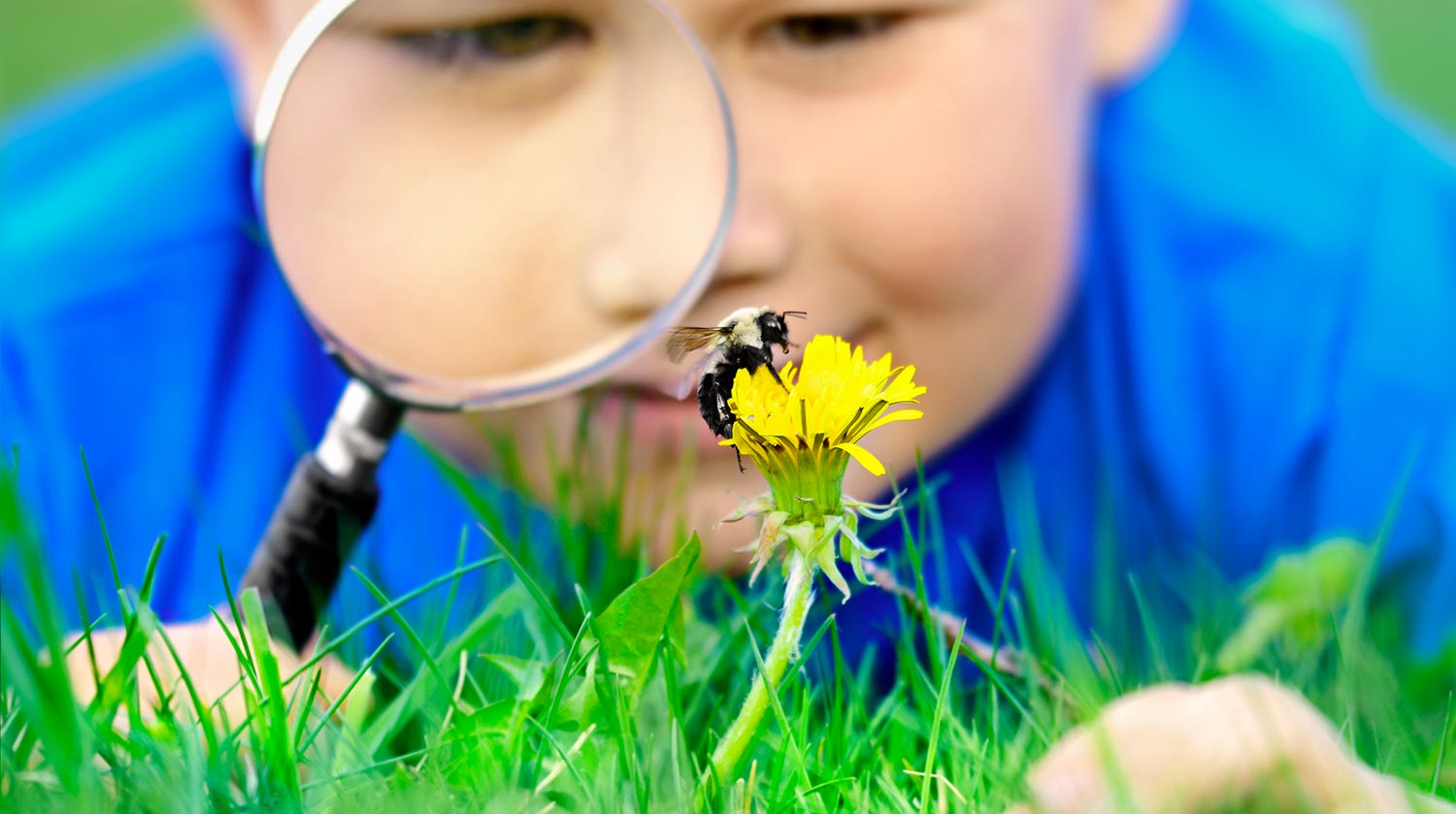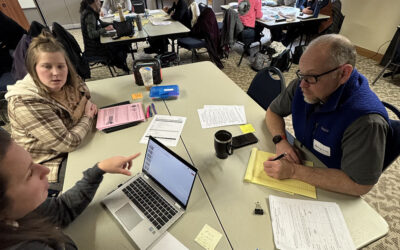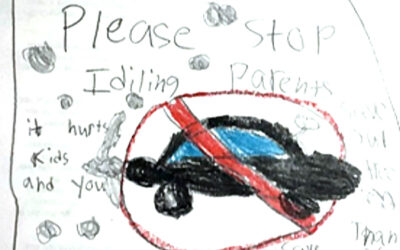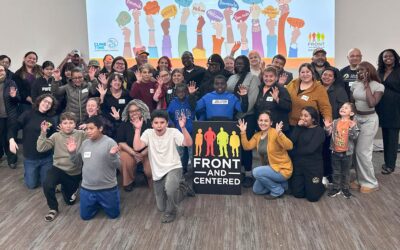This Spring, teachers used a simple clump of dandelions to anchor a Next Generation Science Standards-aligned storyline that motivated their students to go outside and engage with outdoor science observations and investigations.
They questioned their own conceptions of “weeds” and used integrated ELA and Multilingual Writing and Social Studies.
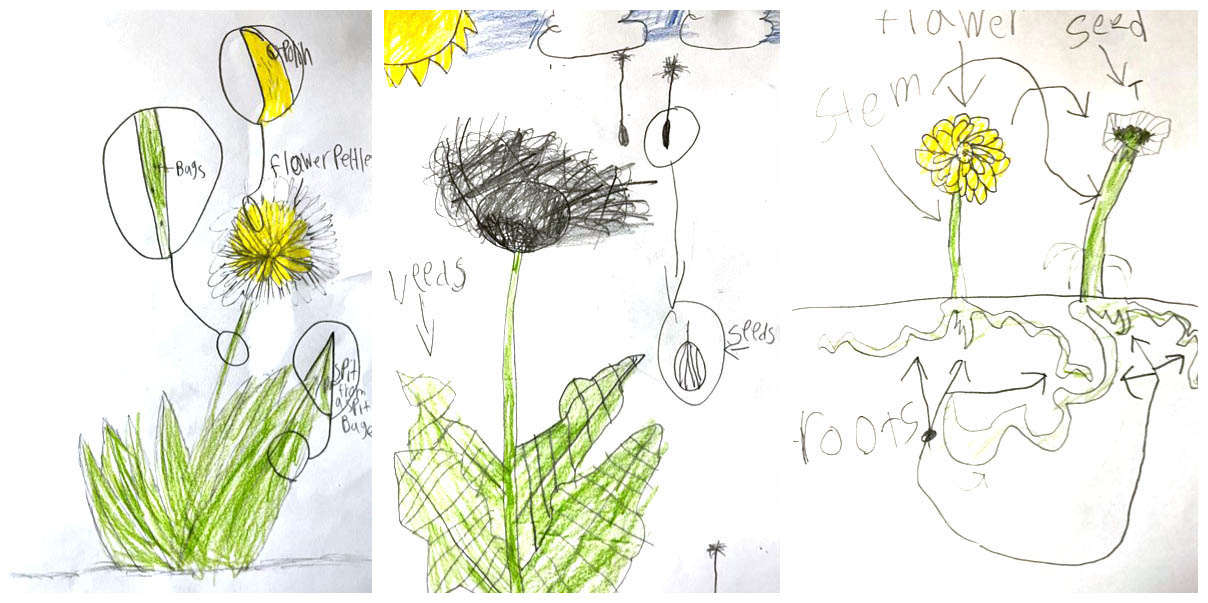
Dandelion scientific drawings
Students immersed themselves in investigating dandelions growing out of cracks in their schoolyards and schools as phenomena. They led Family/ Elder and Community Interviews, delved into exciting Next Generation Science aligned Field Investigations, which an implementing teacher turned into led to dazzling and innovative opportunity for students to design Comics creations about Dandelion Seed Dispersal. Encouraging students to conduct these field investigations and reflect on data gathered on a consistent basis led to rich student-generated questions that blossomed into joyful sharing of these phenomena-based experiences with their extended community.
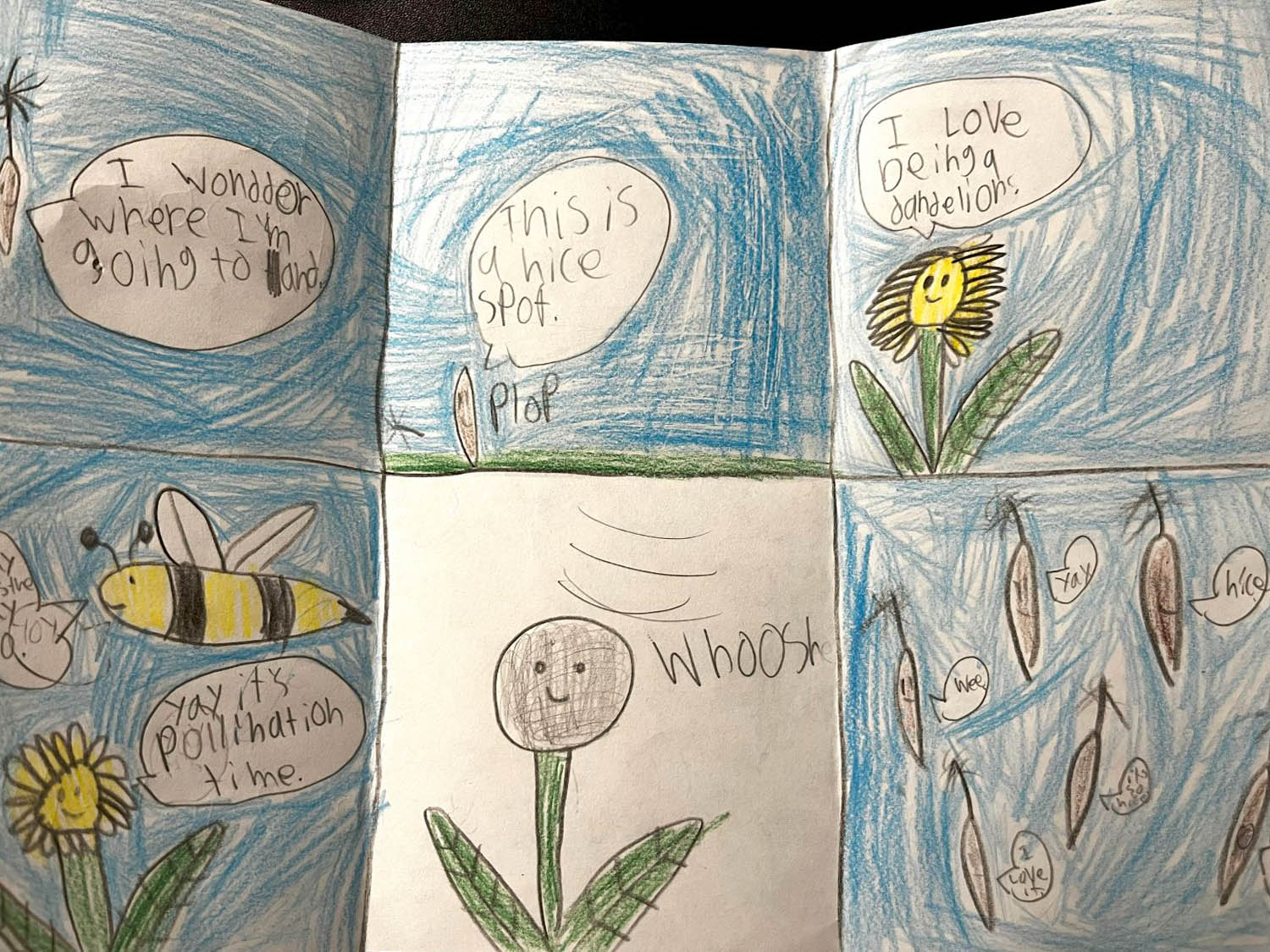
Dandelion Dispersal Comic
Incorporating the schoolyard and community into the classroom is a powerful strategy to foster justice-centered and equitable science. Anchoring place-based learning in meaningful local phenomena elevates student voices, makes learning more relevant, and helps students see themselves as scientists. During the course, teachers reflected on how to best use student-centered learning strategies that integrate content from multiple disciplines (including Next Generation Science Standards, ELA, Multilingual Writing, Math, and Social Studies) and help students build phenomena-anchored connections between Next Generation Science Standards, their lives and communities. While questioning the notion of weeds, teachers especially delighted in the opportunity to collaborate with and learn from other implementing teachers and become an integral part of a professional learning community. Dandelion seeds underground with decomposers[/caption]
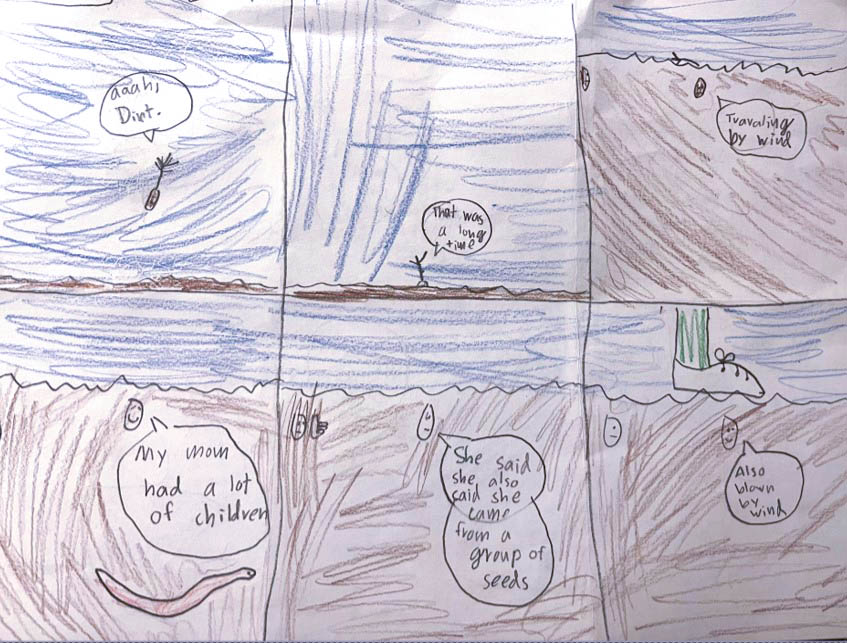
Dandelion seeds underground with decomposers
Teachers came together to implement a student-centered, phenomenon-driven storyline that helped students create connections around anchoring phenomena and cultivate place-based understandings developed through student practices. In their feedback, they showed special appreciation for this unique storyline. They also enjoyed connecting with local community stakeholders and rejoiced at the unique chance to cultivate renewed awe and scientific curiosity with their students.
